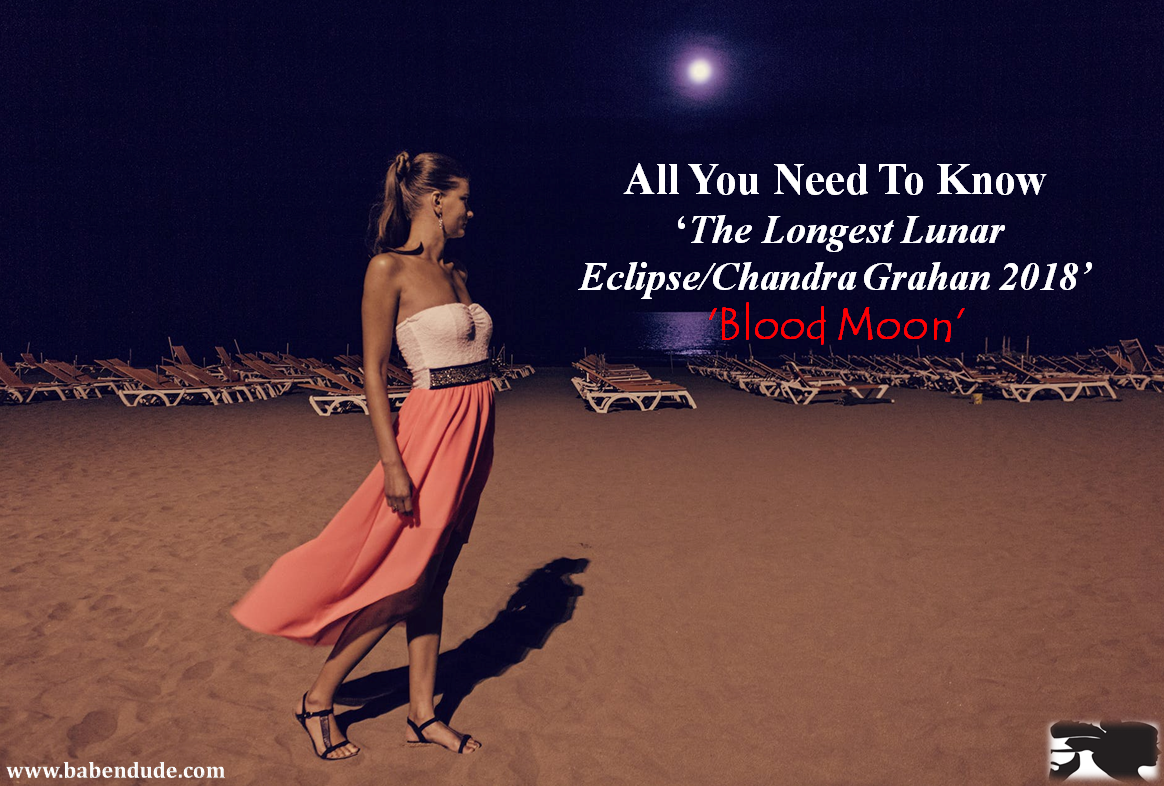 Welcome the longest ‘Lunar Eclipse’ or ‘Chandra Grahan’ of your lifetime on the 27-28 July 2018.
Welcome the longest ‘Lunar Eclipse’ or ‘Chandra Grahan’ of your lifetime on the 27-28 July 2018.
This time, the eclipse of the moon can be seen over a very large area and for a very long time. The shadow of the Earth will cover the Moon for over 6 hours, giving you a chance to witness this one-of-a-kind celestial phenomenon.
After this, you will witness the next lunar eclipse on 31st Dec, 2028.
Know About Lunar Eclipse?
A Lunar Eclipse occurs when the Sun, the Earth and the Moon are aligned very closely in space with the planet (Earth) in between.
India Timings For The Eclipse?
Moonrise 06:59 PM
Penumbral Eclipse Begins 10:44 PM
Partial Eclipse Begins 11:54 PM
Totality Starts 01:00 AM
Maximum Eclipse 01:51 AM
Totality ends 02:43 AM
Partial Eclipse Ends 03:49 AM
Penumbral Eclipse Ends 04:58 AM
Note:- The Amateur Astronomers Association of Delhi (AAAD) with the Nehru Planetarium and Library, has organized a free of cost ‘Lunar Eclipse Watch’ for everyone. The event to start around 10 pm on 27th July 2018.
ALSO READ- Kargil Vijay Diwas – A Tribute To Soldiers, A Message To The Youth
Warnings & Safety?
It is believed that cycles of the moon have an impact on human body (physically and psychologically). But it is also said that this eclipse is safe to watch for everyone even for pregnant women and ill people. You may also eat whatever and whenever you want.
ALSO READ- Policies And Insurances Every Family Must Have – Lifestyle Blog By Babendude
Wanna Capture The Moment?
You can watch the eclipse as long as you want by using optical instruments like Binoculars, Telescope or any kind of smartphone camera, DSLR, or digital camera.
Tips For Babe’s n Dude’s
Let’s click this memorable moment like this…
Turn on your smartphone camera or get your DSLR camera and tripod, simply point it to the Moon, set it to AV mode (DSLR), turn off flash (smartphone), and just press the shutter button (DSLR). And voila, you got it.
